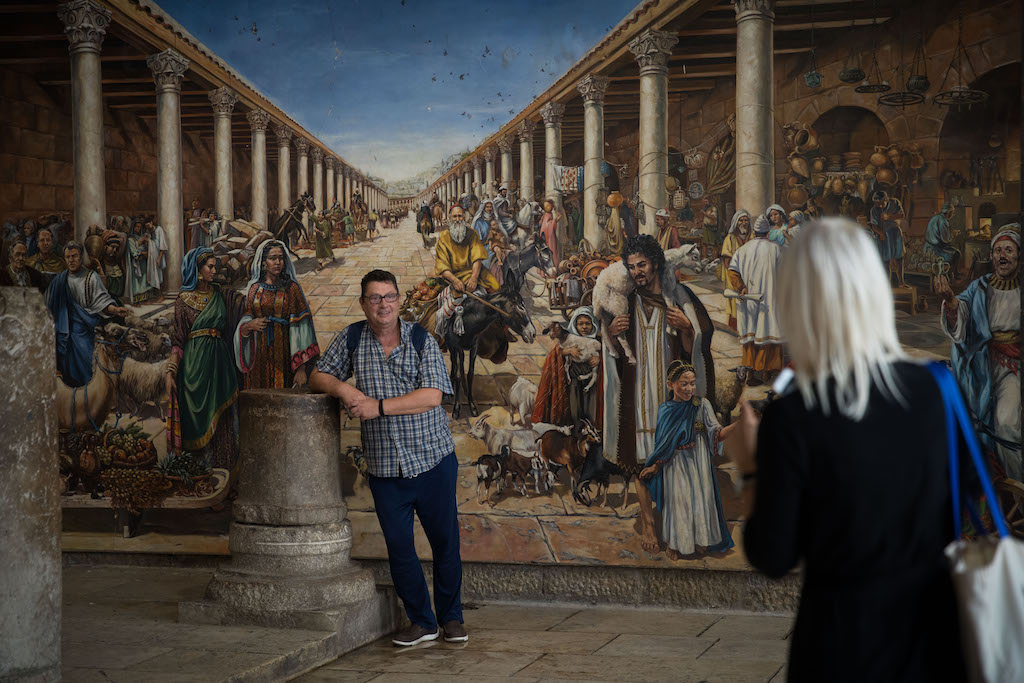Jerusalem: Magnet for Christian Visits (Part 6)
In Part 6 we will explore the nature of today’s Christian visits to Jerusalem.
Onward Christian Pilgrim
First, it is this author’s conviction, after 6 years of study and a 95,000 thesis, that a Christian who visits a holy city like Jerusalem is a ‘pilgrim,’ whether they consciously and proactively seek to be, or not.
Why?
Pilgrimage is simply a ‘long journey to a sacred destination.’ The Bible teaches that all believers are on a long journey to the city with foundations, whose builder and maker is God (Hebrews 11:10).
So our rationale is simple: if the earthly life of a person of faith is one long journey to the sacred destination, then visiting the holy city would be part of the larger pilgrimage.
This generous and inclusive label stands strong, even if the Christian visitor has all the hallmarks of a normal tourist. So they can float on the Dead Sea, hike at Ein Gedi, visit the popular non-biblical sites like Masada, plant a tree, go shopping, and other ‘secular’ activities and still be a pilgrim. Like the Christian faith itself, being a pilgrim is not so much a matter of ‘what you do’ but more like ‘what you believe.’ The faith in the heart, rather than the activity of the hand, is what makes you a pilgrim.
One of the evidences of ‘faith in the heart’ is the Christian pilgrimswillingness to travel to the MiddleEast, even though it has pockets of strife and instability (for example, Syria, Libya and Yemen). Those who are mere tourists do not travel to a ‘war zone’ to have a holiday but the person of faith will. They believe God has led them to make the journey and will protect them along the way.
Do the labels ‘tourist’ and ‘pilgrim’ matter? Some can argue ‘No.’ This author says ‘Yes.’
Here is the reason:
when you call someone a pilgrim, you recognise them as a person of faith. Second, a journey of faith will lead to the things of God. Furthermore, a reward awaits the person who ‘believes’ and ‘seeks.’ Hebrews 11:6 says it so well:
“But without faith it is impossible to please him: for he that cometh to God must believe that He is, and that He is a rewarder of them that diligently seek Him.” (emphasis mine).
So if a person understands that their trip is not just for tourism, but is truly journey of faith, they will be more mentally, emotionally, and spiritually prepared. A great reward awaits them.
This can apply even to the person who is blissfully unaware of these things. This author’s mother, raised in church while young but grew up to be a successful, unchurched, career woman, came for a visit to Jerusalem. Most of her time was spent visiting people and shopping. During the entire period she had only one day of touring Biblical sites and she spent much of it in the local diamond showroom! Yet, years later she commented how ‘close she felt to God’ while in Jerusalem and eventually became a believer.
The Nature of Christian Visits
Since the June ‘Six Day War of June 1967,’ there have been changes in the nature and number of Christian visitors. Prior to this date, since the 1948 war, Jerusalem was a divided city. Israel held the western sector and Jordan the eastern, including the Old City and the Mount of Olives. This means Jordan was the custodian of most of the Biblical sites. The partition of the city did affect tourist numbers. A person could only cross from one side to another via the Mandelbaum Gate, but there were restrictions.
Local Jerusalemites, East and West, Jew or Muslim, could not cross to the other side of the city, full stop. Christian citizens of Israel were allowed a 3 day visit to the Old City once a year. Foreign pilgrims were allowed passage through the Mandelbaum Gate. Needless to say, the division of the city did not help foster increasing tourism.
While local Christians from Middle East countries would have visited Jordanian-held Jerusalem, numbers of visitors from Europe and the rest of the world were limited.
To understand the nature of Christian visits today, let’s compare and contrast them with what happened in the past. Early Christian pilgrimage to Jerusalem was a truly voluntary action motivated by love for the person of Christ and/or desire to see the site of Biblical events. No religious merit was accorded for the visit. Byzantine and medieval practices like shrine visitation, liturgy, indulgences, and veneration of relics were minimal or non-existent. Visiting the city, holy people who lived in the city, and pious study, were some of the intentions of these early visitors (e.g. Melito of Sardis, Origen, the Pilgrim of Bordeaux, Egeria). The pilgrim could have sojourned in Jerusalem for weeks, months, even years.
Modern Christian Jerusalem visits are increasing in tandem with mass tourism. Both have influenced each other. Tourism has given the pilgrim fast efficient travel, comfortable lodging, and a sightseeing element in respect of non-Christian or non-holy sites. Pilgrimage has made holy sites part of the program in many, perhaps most, tour itineraries.
TO BE CONTINUED




